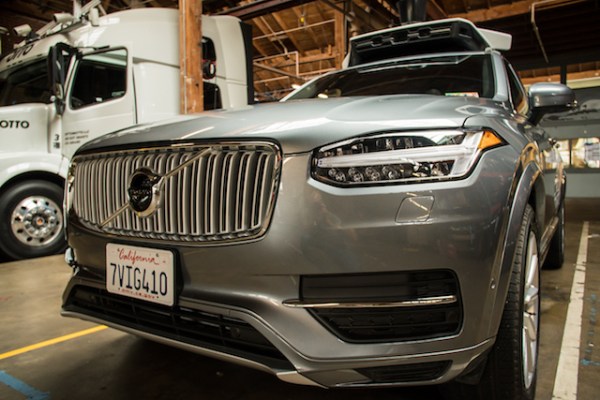Uber won’t stop operating self-driving vehicles in San Francisco, despite an order from the California Department of Motor Vehicles to do just that.
The DMV says Uber needs a permit to test its autonomous vehicles, but Uber argues that its vehicles aren’t autonomous at all and therefore it doesn’t need a permit.
“We respectfully disagree with the California Department of Motor Vehicles legal interpretation of today’s autonomous regulations, in particular that Uber needs a testing permit to operate its self-driving cars in San Francisco,” Uber’s self-driving car lead Anthony Levandowski said in a statement to reporters.
Levandowski repeatedly compared Uber’s self-driving cars, which have been on the road in Pittsburgh since mid-September and in San Francisco this week, to Tesla’s self-driving technology. Tesla owners don’t need a special permit to drive their cars, he argued — so why should the Uber engineers who currently sit behind the wheel of Uber’s self-driving vehicles?
In order to be considered truly autonomous, Levandowski said an Uber vehicle would need to be able to drive itself without human intervention and oversight. “We believe Tesla is right and our vehicles are just like Tesla’s. The vehicle is not capable of driving without a human operator. As long as that’s the case, it’s not an autonomous vehicle,” he said.
The DMV, of course, disagrees. The agency ordered Uber to stop operating its self-driving cars in San Francisco after a dashcam video captured an autonomous Uber speeding through a red light. The DMV warned Uber in a letter that the company will be confronted with “legal action, including but not limited to, seeking injunctive relief” if it does not stop the pilot program.
The difference the DMV might see between Tesla and Uber? Tesla requires drivers using its Autopilot mode to keep their hands on the wheel, while Uber’s engineers hover their hands a few inches away from the steering wheels of their self-driving vehicles. In a Tesla, a driver will receive auditory and visual warnings if he takes his hands off the wheel, and if he doesn’t put them back on, the car will gradually slow down and that hazard lights will turn on.
Uber invited journalists to ride and drive its self-driving cars this summer, and vehicle operators weren’t required to have their hands on the wheel.
While Tesla has announced plans for a more fully-autonomous vehicle, the cars are still being tested — and Tesla has a DMV permit for those tests.
Levandowski said that Uber’s defiance represents “an important issue of principle about when companies can operate self-driving cars on the roads and the uneven application of statewide rules across very similar types of technology.”
Regulations on self-driving vehicles vary state-by-state, and Levandowski was asked why Uber couldn’t just go test its vehicles somewhere else since California regulators clearly aren’t welcoming. He said that Uber’s engineers deserve to see their work displayed in the city where they work.
“We want to see our technology drive in the city we live in and the city we work in,” he said.
Despite the DMV’s order, Levandowski said Uber’s self-driving cars will remain on San Francisco streets, picking up passengers.
